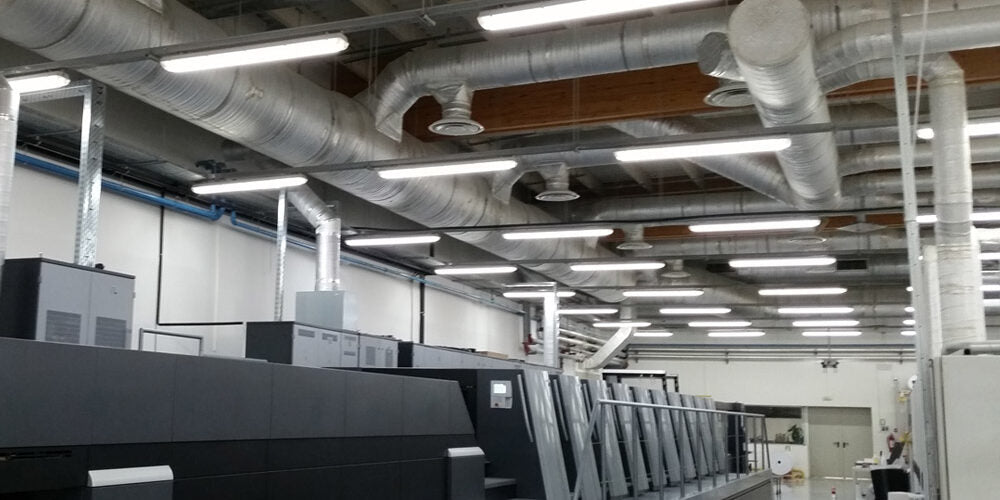
When it comes to buildings, cross ventilation is very necessary as the air inside needs to be replenished and circulated frequently. While you can use any type of ventilation to achieve this, cross ventilation is usually best.
When talking about cross ventilation, you need to have air inlets and outlets. The pressure of the incoming air must also be different from the pressure of the outgoing air. This can be achieved through two openings on opposite sides of the building.
If you've never thought about why cross ventilation is necessary, let's delve deeper into the reasons why air needs to circulate. First, stale air retains a lot of moisture, which can cause mold and bad smells. Irritants and allergens can also accumulate, which can affect the health of those in the building. Cross ventilation will also moderate the building's internal temperature.
The most common options for cross ventilation in construction are windows and wall openings. These items can simply be opened to create natural ventilation. If these items are not available, mechanical ventilation, which is forced ventilation, will be required.
When to use cross ventilation in buildings
There are times when cross ventilation is quite useful in buildings and these scenarios include:
- Narrow buildings
- Exposed websites
- Buildings perpendicular to the prevailing wind
- There is a regular distribution of vacancies
- There are no internal barriers to stop airflow
When to Consider Options Instead of Cross Ventilation
There are times when cross ventilation will not be the best option when it comes to moving air through a building and these scenarios will include:
- Internal walls and partitions are blocking airflow
- Buildings that are too deep to be ventilated by perimeter walls
- The building is protected from the wind
- The air quality outside is not that good
- Too loud noise from outside will prevent windows from being opened
- Security or privacy issues prevent windows from being opened
When you are preparing to install cross ventilation in any building, you must first determine which direction the wind will blow from most of the time. This knowledge will allow you to determine where all intake and exhaust openings should be placed.
If you feel that you will not have enough pressure difference for incoming and outgoing airflow, consider installing additional cross ventilation products. Special wall fans can be useful, as can wall shutters and other natural fans.
Natural cross ventilation is usually the best option, but it is important to note that the behavior of people inside the building can influence the result of the ventilation installed. Anyone can close an open window if they feel cold or hot, and that closed window will affect the ventilation results you are trying to achieve. Therefore, it is necessary to train or at least take a class on what behaviors are expected to ensure ventilation works as it should.
Of course, you can always install automated ventilation, but that means the people inside the building have no control over the environmental conditions. If a person gets hot, they cannot simply open a window to cool off. Some people won't like this and it may make them not want to be inside the building.
It's usually best to have both natural and automated cross ventilation so you can ensure air moves continuously throughout the building. This will ensure people can open and close windows as they wish, and automated cross ventilation will act as a backup method to keep air circulating inside.
7 benefits of cross ventilation
- You will use much less energy on the hottest days of the year, as you won't need to leave the air conditioning on for as long.
- The temperature inside the building's rooms will be much lower, which is perfect during the summer months.
- Cross ventilation is maintenance free, which means there is no cost to maintain or use. This is much better than the cost of installing and maintaining an air conditioning unit.
- Air will continue to enter the building twenty-four hours a day and you will never need to turn anything on or off.
- There are fewer health problems for people who spend time in buildings with excellent cross ventilation.
- As the air inside the building is not stale, people can easily breathe fresh air whenever they want.
- No harmful gases are emitted with cross ventilation, which is better for the people inside the building and also for the environment.
While it's always best to have multiple windows on opposite sides of a building for cross ventilation, you can easily achieve the same goal with just one window or one window in the room. Yes, you would need to install fans or some other type of automated ventilation, but that would be better than all the stale air that would otherwise be floating around.
All buildings and homes need cross ventilation, so this is a good time to brush up on your skills and see how to incorporate the best possible ventilation into everything you build. The more ventilation you include, the better results will be for people inside buildings or homes, now and in the future.

